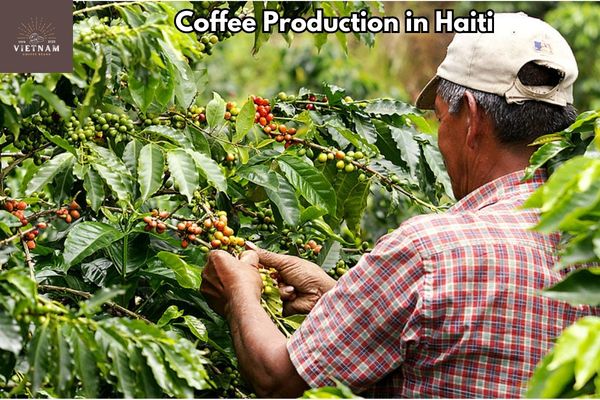I’ve had the privilege of witnessing the rich history and development of coffee production in Guatemala firsthand.
The geography and climate of this beautiful country create the perfect conditions for growing coffee, with temperatures ranging from 16 to 32°C and altitudes varying from 500 to 5,000 meters above sea level.
However, the industry has faced its fair share of challenges, from a lack of knowledge and technology in its early years to the current scarcity of laborers and the influence of foreign companies.
In this article, I’ll delve into the fascinating world of coffee production in Guatemala, exploring its past, present, and future.
Key Takeaways
- Coffee production in Guatemala requires specific temperature and altitude conditions, with suitable temperatures ranging from 16 to 32°C (60 to 90°F) and altitude ranging from 500 to 5,000 meters (1,600 to 16,400ft) above sea level.
- Young coffee plants at lower altitudes need shade, while plantations at 1,500 meters (4,900ft) need protection from cold north winds.
- The coffee industry in Guatemala was initially developed in the 1850s and 1860s, with a significant contribution from German immigrants. However, the industry faced slow growth initially due to a lack of knowledge and technology.
- Anacafé, established in 1960, is the national coffee association in Guatemala that centralizes coffee production statistics, represents Guatemala in international coffee organizations, and has implemented programs like Analab coffee laboratories and Funcafé.
Geography and Climate of Coffee Production in Guatemala

When exploring the geography and climate of coffee production in Guatemala, it is essential to consider an overview of Ethiopia’s coffee sector, as these two regions share a deep-rooted connection in the world of coffee, with their diverse landscapes and distinct climatic conditions contributing to the cultivation of exceptional beans that captivate coffee enthusiasts worldwide.
The suitable temperature range for coffee growth in Guatemala is 16 to 32°C (60 to 90°F). The impact of climate change on coffee production in Guatemala is a growing concern.
The changing weather patterns, such as increased temperatures and unpredictable rainfall, can have detrimental effects on coffee crops. However, sustainable practices in coffee farming can help mitigate these challenges.
Farmers in Guatemala are implementing techniques like shade-grown coffee and organic farming methods to protect the coffee plants from extreme heat and pests. Additionally, they are using water-efficient irrigation systems and promoting soil conservation to maintain the quality of the land for long-term coffee production.
These sustainable practices not only help to adapt to the changing climate but also ensure the future viability of coffee farming in Guatemala.
The geography and climate of coffee production in Guatemala, with its rich volcanic soils and ideal growing conditions, have significantly influenced its reputation as a top coffee producer, while also inspiring researchers to examine the history of coffee in El Salvador for valuable insights and strategies to further enhance Guatemala’s coffee industry.
History and Development of the Coffee Industry in Guatemala
Initially, growth was slow in the coffee industry in Guatemala due to a lack of knowledge and technology. However, the impact of German immigrants played a significant role in introducing coffee to Guatemala and transforming the industry. Their expertise and experience in coffee cultivation and processing techniques greatly contributed to the development of the industry.
Today, the role of Anacafé, the national coffee association in Guatemala, is vital in promoting sustainable coffee production. They centralize statistics of coffee production, define coffee regions, and provide support to coffee producers through programs like Funcafé.
Anacafé also represents Guatemala in international coffee organizations, ensuring that the country’s coffee industry has a voice on the global stage. Through their efforts, the coffee industry in Guatemala continues to thrive and contribute to the country’s economy.
The history and development of the coffee industry in Guatemala have been shaped by various factors, including the country’s unique geography and favorable climatic conditions.
As researchers explore Guatemala’s coffee heritage, they also examine Cuba’s role in the global coffee industry, seeking inspiration and insights to further propel Guatemala’s coffee sector towards international recognition and success.
Role and Functions of Anacafé in Guatemala’s Coffee Sector

As a representative of all coffee producers in Guatemala, Anacafé plays a vital role in promoting sustainable practices and providing support to ensure the continued growth of the country’s coffee sector.
Anacafé actively promotes sustainability in Guatemala’s coffee sector by implementing various initiatives and programs. One of the key areas of focus is mitigating the impact of climate change on coffee production. With changing weather patterns and rising temperatures, coffee plantations in Guatemala are facing significant challenges.
Anacafé works closely with farmers to develop strategies that minimize the negative effects of climate change, such as promoting shade-grown coffee and implementing irrigation systems.
Additionally, Anacafé conducts research and provides training to farmers on sustainable farming techniques. Through these efforts, Anacafé is not only safeguarding the future of coffee production in Guatemala but also preserving the environment for generations to come.
| Role of Anacafé in promoting sustainability | Impact of climate change on coffee production |
|---|---|
| Implementing initiatives and programs | Minimize negative effects of climate change |
| Promoting shade-grown coffee | Rising temperatures |
| Implementing irrigation systems | Changing weather patterns |
| Conducting research and providing training | Sustainable farming techniques |
| Safeguarding the future of coffee production | Preserving the environment |
While Anacafé plays a pivotal role in shaping Guatemala’s coffee sector, the rise of coffee farming in China offers a new perspective on global coffee trends and influences.
Labor Issues in Coffee Production in Guatemala

I discovered that some coffee producers in Guatemala employed child labor in 2013. This was a concerning issue, as child labor is a violation of child labor regulations and goes against ethical sourcing initiatives.
Child labor regulations aim to protect the rights and well-being of children, ensuring they have access to education and a safe environment. Ethical sourcing initiatives promote fair labor practices and the welfare of workers throughout the supply chain. In the case of coffee production, it is crucial to ensure that the beans we enjoy are not tainted by the exploitation of children.
To address this issue, it is important for coffee producers in Guatemala to implement stricter labor policies, conduct regular audits, and collaborate with organizations that promote ethical sourcing. By taking these steps, the coffee industry can work towards eliminating child labor and ensuring a more sustainable and responsible supply chain.
Coffee Regions of Guatemala
The eight coffee regions in Guatemala, as defined by Anacafé, showcase the diverse geographical and climatic conditions that contribute to the growth of high-quality coffee beans. These regions are known for their unique characteristics and play a crucial role in coffee production trends in Guatemala.
Altitude Variation: The coffee plantations in Guatemala are located at altitudes ranging from 500 to 5,000 meters above sea level. This altitude variation creates different microclimates, allowing for the cultivation of a wide variety of coffee beans with distinct flavors and aromas.
Temperature Range: The suitable temperature for coffee growth in Guatemala is between 16 to 32°C (60 to 90°F). This moderate temperature range provides ideal conditions for the development of coffee cherries and the maturation of the beans.
Impact of Climate Change: Climate change poses a significant challenge to coffee production in Guatemala. Rising temperatures, irregular rainfall patterns, and an increase in pests and diseases have affected the productivity and quality of coffee beans. Farmers are implementing adaptive strategies, such as shade-grown coffee and improved irrigation techniques, to mitigate the effects of climate change and sustain coffee production in the long term.
Impact of Foreign Companies on Coffee Production in Guatemala
Foreign companies have increasingly owned and influenced the growth of coffee in Guatemala. Their impact on the coffee production industry has been significant, bringing advancements in technology and expertise that have revolutionized the way coffee is grown and processed.
With their substantial investments, these companies have introduced modern machinery and techniques that have increased productivity and quality. However, this foreign investment has also presented challenges for local coffee producers, who struggle to compete with the resources and capabilities of these multinational corporations.
The local producers face difficulties in accessing the same level of technology and expertise, which puts them at a disadvantage in the market. Moreover, the dominance of foreign companies in Guatemala’s coffee industry has led to a concentration of power, limiting the opportunities for local producers to thrive and succeed.
Comparison of Coffee Production in Guatemala With Other Countries
Compared to other countries, coffee cultivation in Guatemala has unique geographical and climatic conditions that contribute to its distinctive flavor and quality. The country’s temperature range of 16 to 32°C (60 to 90°F) and altitude range of 500–5,000 meters (1,600–16,400ft) above sea level create the ideal environment for coffee growth.
Young coffee plants require shade at lower altitudes, while plantations at higher altitudes must be protected from cold winds. Guatemala is home to various coffee plantations in departments such as Guatemala, Amatitlan, Sacatepequez, Solola, Retalhuleu, Quezaltenango, San Marcos, and Alta Verapaz.
The coffee industry in Guatemala has a significant economic impact, with the country being one of the top producers in the world. Additionally, sustainability practices, such as shade-grown coffee and organic farming, are implemented to ensure the long-term viability of coffee production in Guatemala.
Frequently Asked Questions
Conclusion
In conclusion, coffee production in Guatemala has a rich history and is influenced by the country’s unique geography and climate. The industry has faced challenges in the past, such as a lack of knowledge and technology, but has seen steady growth over the years.
However, the presence of child labor and the increasing ownership of coffee farms by foreign companies pose concerns. Despite these challenges, Guatemala remains a significant player in the global coffee market.
The role of Anacafé in centralizing coffee production statistics is crucial for the industry’s development.





